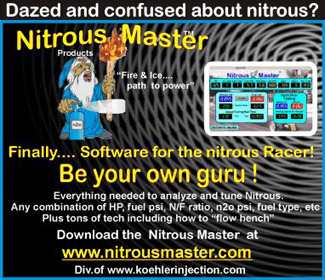
Material World
We're not finished with rod end selection.
There's more: Once you have the misalignment
and dimensions figured out, you have to consider
the elements used in the construction of the
rod end. As mentioned earlier, there are a number
of different materials used in the manufacture
of rod ends. The balls usually are subjected
to the highest loads encountered by the rod
end. Because of this, they require the greatest
hardness and of course, ultimate strength. Some
commercial rod end balls are manufactured from
bronze or even sintered steel materials. From
a strength perspective, these materials aren't
so hot. But there's a big caveat: Some sintered
steels are fully up to the job. You see, even
automotive giants like Ford Motor Company and
German manufacturer, BMW have begun to use sintered
steel for high stress applications such as connecting
rods. And with a proper (and we mean Proper)
heat treat, sintered steels can live happily
in a medium duty rod end ball application. On
the other hand, high quality rod ends normally
incorporate heat-treated steel balls (typically
chrome moly steels, stainless and 52100 bearing
steels are used). In order to remain round,
the balls must be extremely hard (often the
balls are chrome plated to provide a smooth
bearing surface). This is critical when the
ball is placed under a load.
Because of the heat treat and overall hardness
of the ball, the outer rod end race has to be
hard, but not as hard as the ball. Most three-piece
rod ends use a race manufactured from through-hardened
steel alloy or a stainless steel that can be
hardened. In both of these instances, the outer
races are heat treated for wear resistance,
and of course, for strength.
Commercial or economy rod ends usually have
bodies constructed from low carbon mild steels.
Because of their nature, it is not possible
to through harden this material. While this
less expensive material might work in a lightly
loaded application, rod end bodies
ADVERTISEMENT
 |
manufactured
from chrome moly or heat treated stainless steel
are far superior for severe duty applications.
By using a chrome moly or stainless body, then
the physical size of the rod end can be reduced
(simply because the material is stronger). You'll
also find that some manufacturers have used
7075-T6 material for rod end bodies. Basically,
7075-T6 aluminum is one of the strongest grades
of aluminum and has a tensile strength slightly
greater than mild steel. If you had a pair of
rod ends with a similar design, and one was
made from mild steel and the other from 7075-T6,
you'd end up with similar strengths. Unfortunately,
aluminum is not as forgiving (under analysis,
it will not stretch or bend as much as mild
steel will before breaking). And when you compare
the strength of an aluminum rod end to the strength
of a heat-treated chrome moly or stainless component,
you'll see that the steel versions are almost
twice as strong.
So what's the bottom line when it comes to
materials? Unless you're absolutely positive
about the loads encountered, and have a very
good grasp of the limitations of aluminum rod
ends, use high quality heat-treated steel models.
It's better to be safe than sorry.
Finite Life & Junkyard Dogs…
Are used or surplus rod ends a good deal? In
simple terms, no. Don't even think about it.
Just like any other piece of hardware, a rod
end has a finite mechanical life. You just don't
know if a surplus or used rod end has reached
it's finite cycle or not. There is no safe way
to repair or "tighten" a worn bearing. Any bearing
(rod end or otherwise) that has been dented
in the race area or bent should be discarded.
The same applies to any rod end showing any
amount of stretching in the threads or the head.
Any rod end that has been involved in an accident
should also be checked very closely. Replacing
suspect bearings is cheap insurance.

|